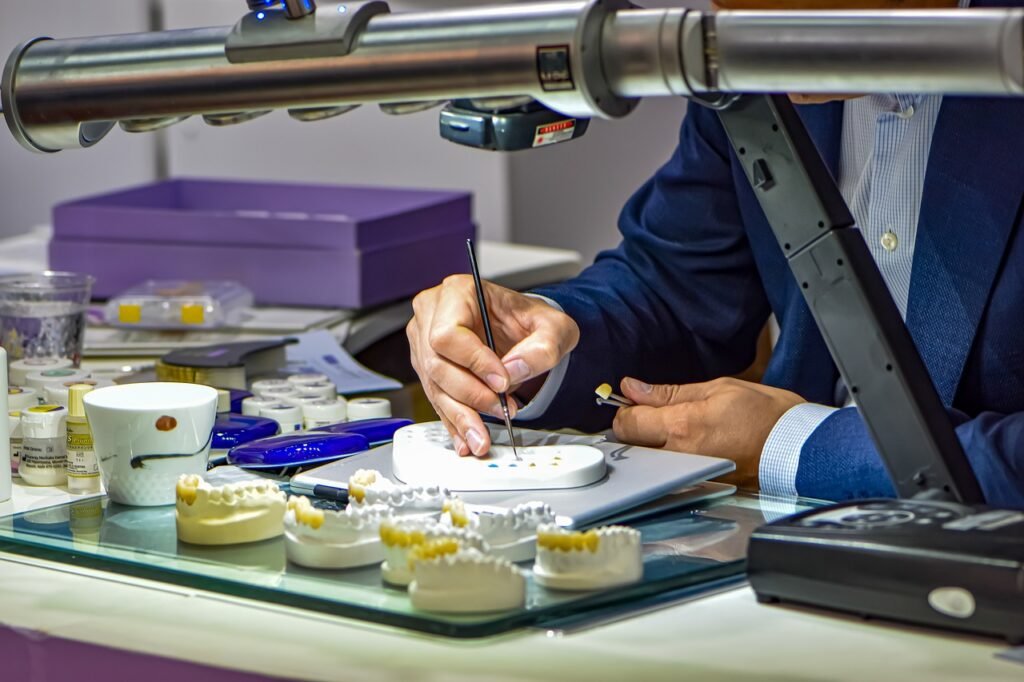Dental resin bonding is a pivotal procedure in modern dentistry, providing a minimally invasive way to enhance smiles and restore tooth functionality.
This guide explores the science, process, applications, and advancements of dental resin bonding, highlighting Aidite’s innovative dental resins for exceptional results.
- What is Dental Resin Bonding?
- The Science Behind Dental Resin Bonding
- Step-by-Step Process of Dental Resin Bonding
- Applications of Dental Resin Bonding
- Factors Influencing the Success of Dental Resin Bonding
- Advantages of Dental Resin Bonding
- Maintenance and Aftercare of Dental Resin Bonding
- Why Choose Aidite’s Dental Resins?
- FAQs
What is Dental Resin Bonding?

Dental resin bonding involves adhering composite resin to the surface of teeth to improve their appearance or functionality. It is commonly used for cosmetic enhancements, such as reshaping teeth, closing gaps, and repairing chips and cracks. It also serves restorative purposes, such as filling cavities and strengthening weakened teeth.
This procedure combines aesthetics and functionality, allowing patients to regain confidence while addressing dental health issues.
The Science Behind Dental Resin Bonding
The success of dental resin bonding relies on two mechanisms: micromechanical retention and chemical bonding. Etching creates microscopic roughness on the enamel or dentin, improving resin adherence. Bonding agents form a strong interface between the tooth surface and the resin, ensuring durability.
Composite resins, polymerized under light activation, offer high strength and a natural appearance, making them ideal for cosmetic and restorative applications. Aidite’s dental resins enhance these benefits with advanced technology, offering stain resistance, optimal curing properties to reduce chairside time, and biocompatibility for patient safety and comfort.
Step-by-Step Process of Dental Resin Bonding
Dental resin bonding is a precise procedure that requires skill, advanced materials, and attention to detail. Here’s a breakdown of the process:
1. Initial Assessment and Planning
The procedure begins with a thorough exam to evaluate your needs. The dentist examines the tooth to be treated, discusses desired outcomes, and selects the right resin material. Aidite resins are preferred for their durability, biocompatibility, and natural aesthetic.
2. Tooth Preparation
The tooth surface is cleaned to remove plaque and stains. The dentist then etches the enamel or dentin with an acid solution, creating a rough surface for better adhesion. This ensures a strong bond between the tooth and resin.
3. Application of Bonding Agent
A bonding agent is applied to the etched surface. This liquid layer penetrates the tooth’s surface, creating a strong interface for resin adhesion. Proper application is key to a lasting bond.
4. Placement of Composite Resin
The composite resin is applied in layers. Each layer is carefully shaped to match the natural contours of the tooth. Aidite resins offer customizable shades for a seamless, natural look.
5. Curing the Resin
A curing light hardens the resin, initiating the polymerization process. Proper curing ensures the resin achieves maximum strength and durability.
6. Shaping and Finishing
The resin is then contoured to match the natural shape of the tooth. This step ensures the restoration aligns with the surrounding teeth, enhancing appearance and function.
7. Polishing for a Perfect Finish
The final step is polishing the resin to a high shine. This smooth surface looks great, helps prevent plaque buildup, and promotes better oral hygiene.
Applications of Dental Resin Bonding

Cosmetic Uses
Dental resin bonding is commonly used to improve the appearance of teeth. It can reshape irregular teeth, close gaps, and repair chips or cracks. It’s also great for masking stains that whitening treatments can’t fix and restoring short teeth’ balance.
Restorative Uses
Bonding restores tooth functionality in addition to its cosmetic benefits. It’s a tooth-colored alternative to traditional fillings, strengthening weakened teeth and repairing minor imperfections. Aidite’s resins are ideal for cosmetic and restorative purposes, offering strength and durability.
Factors Influencing the Success of Dental Resin Bonding
1. Surface Preparation
Proper tooth cleaning and etching are crucial for creating an ideal surface for bonding. Any contamination, such as saliva, can weaken the bond, so moisture control is essential.
2. Material Selection
Choosing the right resin is key for durability and aesthetics. Aidite’s resins are ideal for their strength, stain resistance, and natural appearance, ensuring a seamless restoration.
3. Technique Sensitivity
The resin must be applied in thin layers to minimize shrinkage. Adequate curing light exposure is essential to ensure the resin’s strength and stability.
Advantages of Dental Resin Bonding
1. Aesthetic Appeal
Dental resin bonding provides a natural look by seamlessly blending with the surrounding teeth. It mimics the translucency of natural enamel, resulting in a flawless smile without invasive procedures.
2. Minimally Invasive
Bonding preserves the natural tooth structure. Unlike crowns or veneers, which require more tooth reduction, bonding is a conservative treatment that requires minimal tooth-tooth alteration.
3. Cost-Effective
Resin bonding is an affordable option compared to porcelain veneers or crowns. It offers long-lasting results at a fraction of the cost, providing great value for cosmetic and restorative treatments.
Maintenance and Aftercare of Dental Resin Bonding
1. Daily Oral Hygiene
Brush your bonded teeth twice daily with a soft toothbrush and non-abrasive toothpaste. Floss gently to remove plaque and prevent gum disease.
2. Avoiding Hard Foods
Avoid chewing hard items like ice, pens, or nuts to protect your resin. Sticky foods should also be avoided, as they could dislodge or wear down the bonding.
3. Regular Check-Ups
Routine visits to the dentist are essential to keep your resin bonding in good condition. Professional cleanings and inspections will help spot any damage early, ensuring long-term success.
Why Choose Aidite’s Dental Resins?

Aidite’s dental resins stand out in the industry for their exceptional performance and reliability. Here’s why they are a trusted choice for dental professionals:
- Superior Adhesion: Aidite resins provide secure, long-lasting restorations that stay in place, offering peace of mind for both patients and practitioners.
- Aesthetic Integration: The natural tooth color and translucency of Aidite resins ensure restorations blend seamlessly with the rest of the smile, offering lifelike results.
- Advanced Formulas: Aidite resins combine strength and flexibility, making them suitable for various cosmetic and restorative procedures. They ensure durability and aesthetic appeal.
- Wide Compatibility: Aidite’s resins are versatile and compatible with various dental applications, including bonding, fillings, and veneers.
FAQs
Is resin good for your teeth?
Yes, dental resin is a safe, biocompatible, and durable material widely used for restorative and cosmetic dental procedures. It effectively restores tooth function and aesthetics while being minimally invasive, making it an excellent choice for long-term use in the oral cavity.
How long does resin bonding last?
Resin bonding can last 5–7 years or longer with proper care. Maintenance includes good oral hygiene, avoiding staining foods and beverages, and regular dental check-ups. Over time, bonding may need touch-ups to maintain its appearance and functionality.
Is resin bonding expensive?
No, resin bonding is a cost-effective solution for cosmetic and restorative dental needs. Prices typically range from $100 to $500 per tooth, making it more affordable than veneers or crowns while delivering excellent aesthetic and functional results.
Can resin bonding fix gaps in teeth?
Yes, resin bonding is an effective solution for closing small gaps between teeth. It’s a minimally invasive procedure where the resin is applied, shaped, and polished to create a natural appearance, improving your smile without orthodontic treatment.
Is resin bonding prone to stains?
Yes, resin bonding can stain over time due to exposure to coffee, tea, wine, or smoking. Maintaining good oral hygiene and visiting your dentist for regular cleanings can help minimize discoloration and keep your bonded teeth looking their best.
Conclusion
Dental resin bonding is a versatile and minimally invasive solution for enhancing and restoring teeth. Its combination of aesthetics and functionality meets patients’ diverse needs while preserving natural tooth structure. Aidite’s advanced Dental Resin optimizes this procedure with superior adhesion, durability, and lifelike aesthetics.
Choose Aidite’s innovative dental resin solutions to transform your practice and deliver exceptional patient care.



